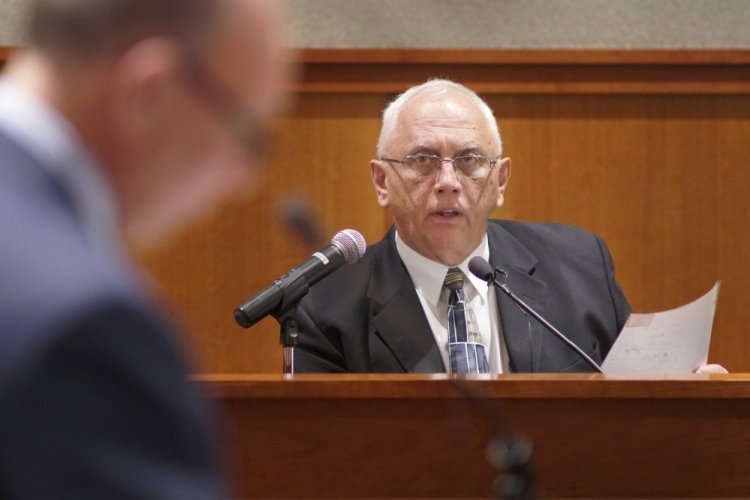The lead detective in the investigation of the 1989 murder of Jessica Briggs said Tuesday that he was embarrassed when he found two boxes of original case files in his home this spring, and turned them over to prosecutors even though he knew it would cause trouble for him later.
Retired Portland police Detective James Daniels said he looked for notes related to the prosecution of Anthony H. Sanborn Jr. at the request of the Maine Attorney General’s Office, after a judge freed Sanborn on bail in April. Sanborn was convicted in 1992 of murdering Briggs, his one-time girlfriend, spent 27 years in prison and is now trying to clear his name.
Daniels testified that as he dug through the material, he was at first relieved that he found information that the state had asked for. But then he found original reports from the case – not copies – and realized what he had.
“My first reaction was, ‘Oh good, I found some notes, I’m going to turn those in,’ ” said Daniels during cross-examination by Assistant Attorney General Paul Rucha. “On the bottom I saw, ‘Oh my gosh, there’s the originals.’ My first reaction was, ‘I found the notes,’ but when I saw those original reports, it’s embarrassing. I don’t even know how it happened.”
Daniels previously testified under direct examination by Amy Fairfield, one of Sanborn’s lawyers, that he kept the boxes inadvertently after he retired in 1998 and had to clean out the papers and files that had accumulated in his area of the detective bureau. On Tuesday, Daniels elaborated that he kept what some considered to be a messy desk at the bureau.
Rucha asked Daniels why he didn’t just destroy the files after he found them.
“That would be the prudent thing to do if you wanted to hide things,” Daniels said. “I knew this would cause trouble down the road for me personally. It was embarrassing, but I knew the right thing to do was to turn them in, so I did.”

Jessica Lynn Briggs, the murder victim
Daniels also testified about a polygraph examination that Sanborn took, in which he was found not to have been truthful when asked whether he stabbed and killed Briggs. Daniels said that he watched the exam from a closed-circuit TV system, and that when Sanborn was informed of his results, he began to get nervous and cry, saying that he didn’t want to be blamed for something he didn’t do.
Daniels said the lie-detector test was a factor in deciding whether to continue to look at Sanborn as a suspect.
Rucha also asked Daniels questions in response to various allegations leveled against the police by Sanborn in court records. Sanborn’s defense team has alleged police and prosecutorial misconduct in the original trial.
Daniels denied telling witnesses what to say or how to testify, and said he did not intentionally leave out information from his typed reports that were ultimately handed over to Sanborn’s defense.
During one segment of questions, Superior Court Justice Joyce Wheeler, who is presiding over the hearings, interjected to ask questions of her own.
Wheeler asked about a series of Polaroid photos that depict Gerard Rossi, one of Sanborn’s adult friends at the time of the murder, engaged in various sexually explicit poses with an underage girl who may not have been fully conscious.
Sanborn alleges that prosecutors made a silent deal with Rossi not to prosecute him for sex crimes if he testified against Sanborn.
Daniels on Tuesday denied ever making such a deal and said during testimony that he was told that Sanborn took those photos at a motel in Augusta.
Also at trial, Daniels testified there was no evidence of sex crimes by Rossi, only allegations.
Daniels testified that, in 1989, the definition of rape required penile penetration, and from the photos, he could not discern whether what they depicted met the legal definition of the crime.
Matt Byrne can be contacted at 791-6303 or at:
Send questions/comments to the editors.



